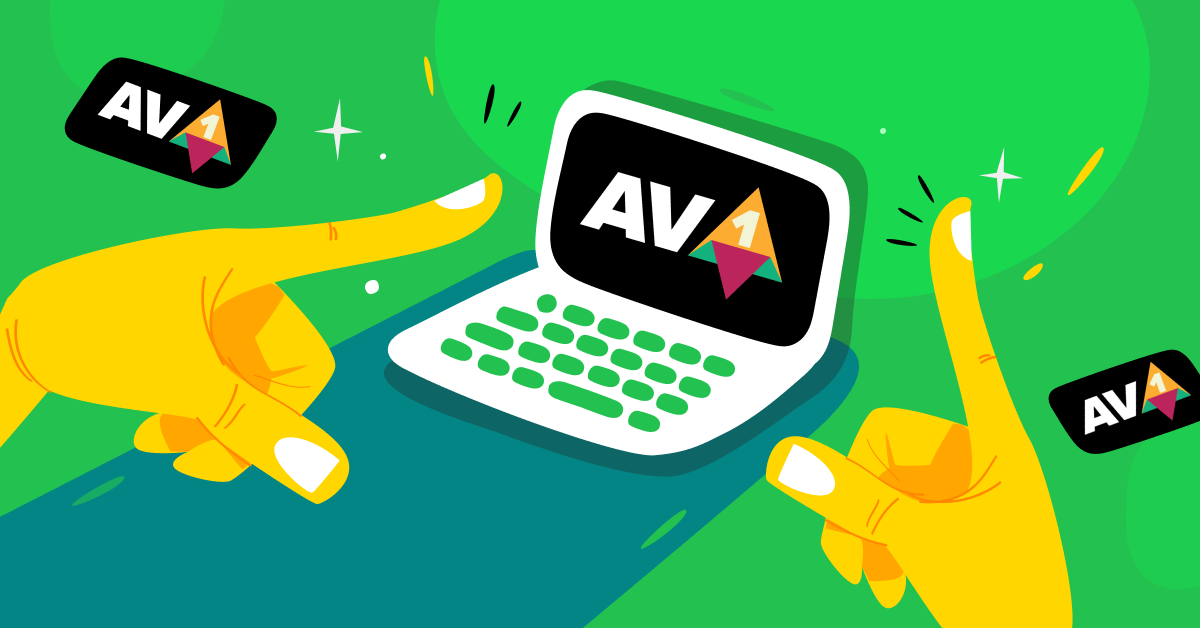The video streaming industry is rapidly evolving with advanced technology. As we consume more video content than ever, the need for efficient, high-quality video delivery is paramount. Among the most talked-about solutions are video codecs. They compress and decompress video files. Popular codecs include H.264, HEVC, and the latest contender, AV1.
AV1 stands for AOMedia Video 1. It’s a cutting-edge codec designed to improve video quality while reducing data usage. It’s a product of the Alliance for Open Media, aiming to provide royalty-free options in the codec market.
This blog will explain everything you need to know about the AV1 codec. Let’s explore how it plays a significant role in the future of video streaming.
Understanding Video Compression Technology and Codecs
Video compression technology is essential for reducing the size of video files without significantly compromising their quality. This process allows for efficient storage and streaming of videos across various platforms. Codecs, which stand for “coder-decoder,” are the software tools that perform this compression and decompression. Popular video codecs include AV1, VP9, H.264, and H.265 (HEVC).
The importance of video compression and codecs cannot be overstated. They are the backbone of video streaming services, enabling users to watch high-definition content without buffering. They also play a critical role in the compatibility of videos across different browsers and mobile devices. Thus, video codecs help a wide audience access the content.
What is AV1 Codec?
The AV1 or AOMedia Video 1 codec is the next step in video technology. It’s designed to make videos stream faster and look better, even on slower internet connections. Created by the Alliance for Open Media, which includes big names like Google, Microsoft, and Netflix, AV1 aims to replace older codecs like H.264.
What sets AV1 apart is its efficiency. It can compress video files to be 30% smaller than those using H.264 or VP9 codecs. This means less buffering and higher-quality visuals for viewers. AV1 is royalty-free, making it more accessible for developers and content creators. This codec is not just about improving video streaming; it’s about making high-quality video available everywhere. As more companies adopt it, users can expect a smoother, richer viewing experience across the web.
The Evolution of AV1 Codec
The AV1 codec represents a significant step in the evolution of video codecs developed by the Alliance for Open Media. This alliance, formed on September 1, 2015, by leading tech giants such as Amazon, Cisco, Google, Intel, Microsoft, Mozilla, and Netflix, aimed to tackle the high costs and complex licensing of the HEVC codec. The motivation behind AV1 was clear: to create a codec free from the burdens of royalty fees and licensing uncertainties that plagued HEVC, which hurt free and open-source software.
AV1’s development was collaborative, building on the foundations of VP9 and integrating techniques from experimental formats like Mozilla’s Daala, Google’s VP10, and Cisco’s Thor. This broad coalition of companies, including later additions like Samsung, Vimeo, AMD, Nvidia, ARM, Facebook, Hulu, VideoLAN, Adobe, and even Apple as a governing member, showcased the industry’s support for AV1.
The first version of the AV1 codec was released on April 7, 2016, with the bitstream specification following on March 28, 2018. By June 25, 2018, version 1.0.0 of the codec was officially published, marking a significant milestone in its development. However, the journey wasn’t without its challenges. Early versions of AV1 were criticized for their slow performance compared to existing HEVC encoders. This feedback led to concentrated efforts to enhance the speed and efficiency of the reference encoder, resulting in notable improvements by March 2019.
The official MIME type for AV1, designated as video/AV1 on January 21, 2021, further solidified its place in the industry, especially for applications using the Real-time Transport Protocol (RTP). This development phase of AV1 highlights not just the technical advancements but also the collaborative spirit of the tech industry to push forward a more open and accessible video codec.
How Does AV1 Work?
AV1 builds on the foundation laid by Google’s VP9 codec. It introduces advanced coding techniques that enhance its ability to adapt to various video inputs. This next-generation codec offers encoders a richer set of coding options. It enables the encoding process to be tailored for improved performance, regardless of the input type.
As an open-source project, AV1 benefits from the collective expertise of the Alliance for Open Media, with development in C and assembly language. It has broad compatibility. Its open-source nature, under the BSD 2-Clause License, encourages contributions from the community.
Features are proposed, reviewed, and tested through a transparent process that includes flags for experimental options, allowing for flexible integration and testing. This rigorous review ensures that new features are compatible with existing hardware and adhere to intellectual property laws.
AV1 also stands out by directly integrating HDR and color space metadata into the video bitstream, improving compatibility with modern devices and overall video quality. This approach to metadata, combined with its superior compression algorithms and support for various container formats, positions AV1 as a leading codec for delivering high-quality video content efficiently across streaming devices, browsers, and the YouTube app without the burden of licensing fees.
Key Features of AV1 Codec
- AV1 outperforms HEVC, VP9, and AVC (H.264).
- Suitable for serving high-resolution content like HD and UHD, saving bandwidth, and improving user experience.
- Potential for real-time applications.
- Well-suited for high-resolution (HD, UHD), wide color gamut, and high frame rate applications.
- Better support for 10/12-bit encoding and HDR.
- Developed by the Alliance for Open Media (AOMedia).
- No licensing fees, making it flexible for both commercial and non-commercial content.
Is AV1 Better than H.265?
AV1 (AOMedia Video 1) and H.265 (High-Efficiency Video Codec, HEVC) are both advanced video compression standards. Let’s compare them:
Compression Efficiency:
- AV1 offers approximately 30% better compression than H.265 for the same image quality.
- This means AV1 can deliver high-quality video while using less data.
Royalty and Licensing:
- AV1 is royalty-free, making it more accessible and cost-effective.
- H.265 has a complex and expensive royalty structure, which can be a limitation.
Hardware Support:
- H.265 is supported by GPUs and CPUs from various manufacturers like AMD, Nvidia, Intel, Apple, and Qualcomm.
- AV1 decoding support is growing, but only Nvidia and Intel currently provide AV1 encoding support.
The Bottom Line
The AV1 codec represents a significant step forward in video compression technology. Developed by the Alliance for Open Media, it aims to provide high-quality video at reduced file sizes. This codec ensures faster streaming with less bandwidth usage. AV1 is designed to be more efficient than its predecessors. It offers better compression without sacrificing quality. This makes it ideal for online video platforms, where reducing data usage while maintaining high image quality is key.
For those looking to leverage the benefits of the AV1 codec in their live-streaming projects, Castr offers a comprehensive solution. With support for multiple codecs and advanced features like live transcoding and adaptive streaming, Castr ensures a smooth streaming experience. Its adaptive bitrate technology adjusts the video quality in real-time based on the viewer’s internet speed. This ABR technology ensures uninterrupted playback.
Castr’s multistreaming capability allows you to broadcast your content across various platforms simultaneously, maximizing your reach. To experience the future of live streaming with the support of the latest codecs, including AV1, try Castr today.







